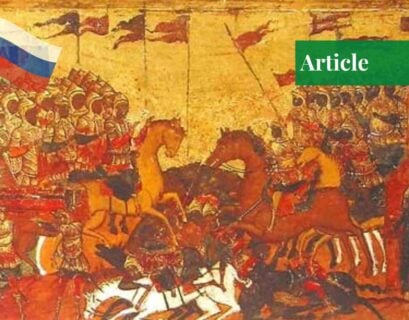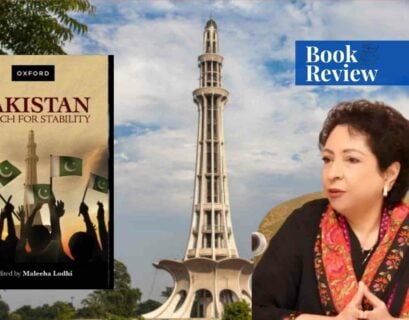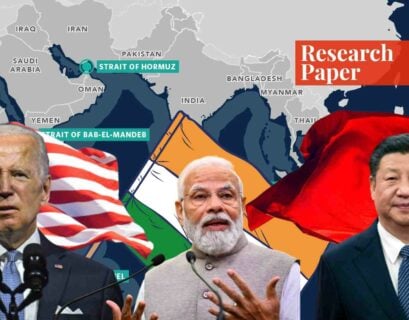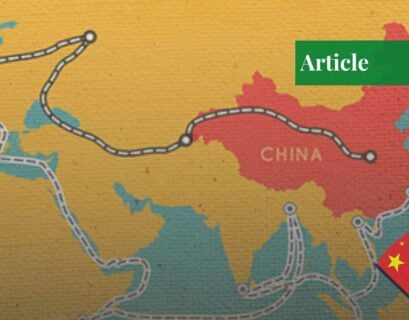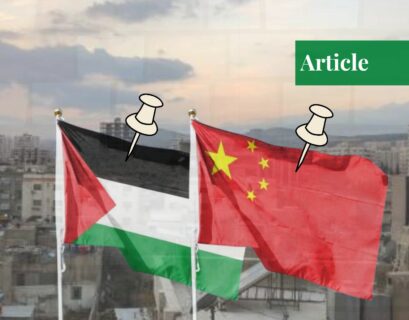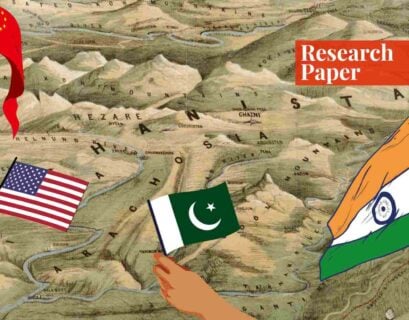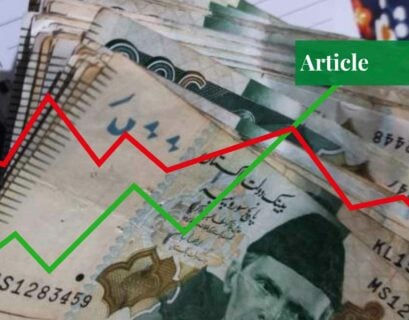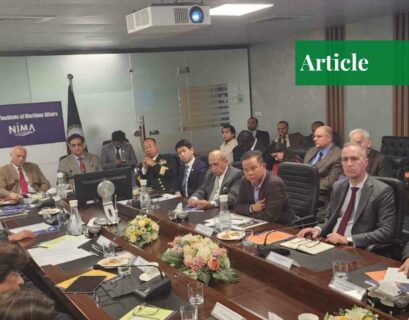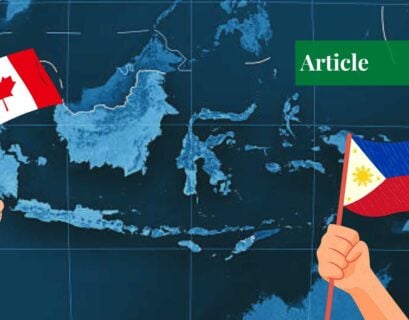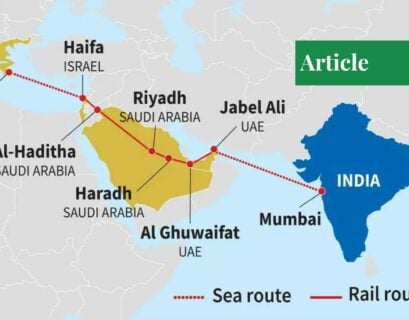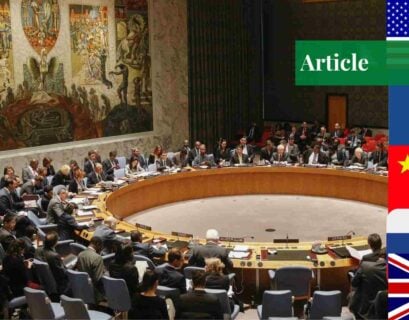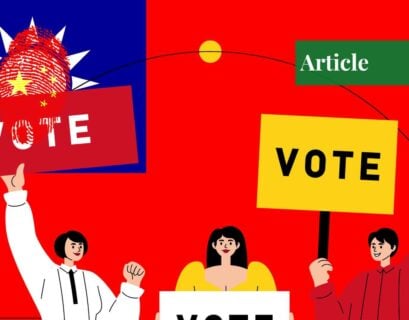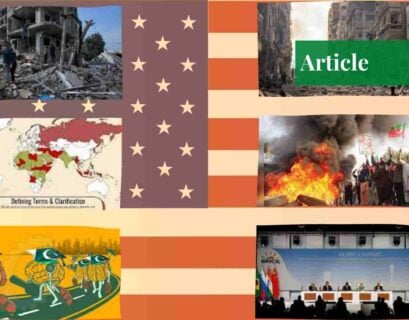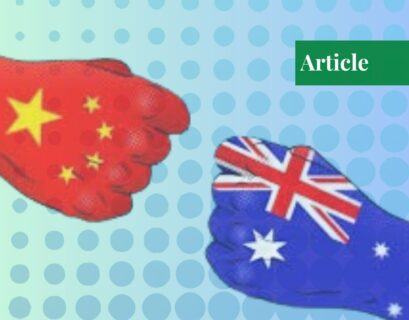Maskirovka, A Russian Military Strategy—Is the Element of Surprise Still Relevant?
Maskirovka has always been an elusive term, often times used crudely at any Russian perceived act, but there is more depth, complexity, and meaning to maskirovka than some immoral Russian trickery.
It is a military art, deemed reliable since its first use against the Mongols. It is a way of war, and along with it comes the element of surprise, an under-rated part of maskirovka.
Alishbah Syed explores the concept of maskirovka and the continuing relevance of surprise in it.
Pakistan: Search for Stability by Dr. Maleeha Lodhi
Pareesa Memon outlines the accomplishments and publications of Dr. Maleeha Lodhi, a prominent figure in Pakistan’s diplomatic landscape. Her review of Dr. Lodhi’s book “Pakistan: Search for Stability,” focuses on Pakistan’s political, economic, and social challenges.
The book highlights the issues such as the disengaged youth, current account deficit, climate change, and more. It concludes with recommendations and solutions for said issues, including governance reforms, economic revival, youth engagement, and the strengthening of local governments.
Major Powers’ Interests in IOR And Implications For the Region
The Indian Ocean Region (IOR) is a critical area of focus for global powers due to its economic significance, strategic chokepoints, and natural resources.
The US, China, and India are vying for dominance in the region, with new alliances and military bases being established to safeguard their interests. China and India are expected to be major engines of growth.
The complex interdependence and potential threats in the IOR necessitate constructive dialogue and a balanced approach to regional security.
Is China’s Belt and Road Initiative (BRI) Another Marshall Plan?
Though they’re separated by more than half a century, the American Marshall Plan and China’s Belt and Road Initiative (BRI) were both responses to global crises. Fahad Nasir provides a comparative analysis of the two financial initiatives, drawing upon the differences and similarities between the two in a comprehensive manner.
Palestine: Nemesis of Islamic Character
The conflict between Israel and Palestine is complex and has historical, military, and political dimensions. It is rooted in the illegal occupation of Palestinian land. The crisis has been analyzed extensively, but the suffering continues.
Lt Gen (R) Tariq Khan states that it is crucial to take a stand, especially when innocent lives are at stake. The conflict is not about generalizations but specific incidents of legal, moral, communal, and societal violations.
The historical backdrop of the conflict goes back over a century, with the concept of Zionism playing a significant role.
[Video] The Future of Shipping | Egypt’s Suez Canal vs Israel’s Ben-Gurion Canal
The Suez Canal blockage in 2021 had a significant impact on the global economy, which prompted a search for alternative trade routes.
This video explores the Northern Sea Route (NSR) and Israel’s Ben-Gurion Canal as potential alternatives to the Suez Canal, analyzing their benefits, challenges, and geopolitical implications.
It contemplates the role of major powers like Russia and China in shaping these trade routes and considers the future of global shipping and trade.
Does China Really Support Palestine?
China has a complex relationship with Palestine and Israel. Although the economic giant has supported the Palestinian struggle for independence, it also maintains strong economic relations with Israel.
China’s “Middle East policy” primarily centers around its financial investments and the BRI. It is trying to maintain these investments through diplomatic relations.
According to Maidah Tariq, China has maintained a balanced stance since the initial stages of the conflict that erupted on October 7th. China has expressed support for an independent Palestinian state and the two-state solution, and it continues to work towards a peaceful resolution of the conflict.
The New Great Game: A Pakistani Perspective
Lt Gen Tariq Khan provides an in-depth account of the historical rivalry known as the “Great Game” that took place between the British and Russian empires in the subcontinent during the 19th century.
In his paper, he explains that the withdrawal of the US from Afghanistan created a power vacuum, which set the stage for a “New Great Game” in the South Asian region.
This region is of immense importance due to its geo-strategic location which is central to China, Central Asian republics, Iran, and Pakistan.
Economy of Pakistan over the Years
With an external debt exceeding 130.1 billion dollars, Pakistan faces precarious debt levels, political instability, and deteriorating economic indicators.
The global economic downturn spurred by Covid-19 hit advanced economies hard and sent the growth rates of developing and underdeveloped states plummeting. The PTI government made modest gains, particularly in agriculture and manufacturing. However, deep-seated challenges such as energy crises and regulatory hurdles persisted.
Hamza Shariff concludes that Pakistan must prioritize structural reforms, invest in human capital, and diversify energy sources to unlock the nation’s economic potential.
NIMA’s Hybrid Seminar on the Indian & Pacific Oceans
Today, the National Institute of Maritime Affairs (NIMA) in collaboration with the Royal Malaysian Navy – Sea Power Centre (RMN – SPC), Pakistan Embassy in France, Centre for International Studies (CeSI) in Italy, and the Institute of Regional Studies held an international hybrid seminar on the regional and international significance of the Indian and Pacific Oceans at the NIMA Head office in Islamabad.
Canada-Philippines Defence Agreement and the South China Sea Dispute
The recent defence agreement signed between Canada and the Philippines is focused on cooperation in military education, information sharing, training exchanges, peacekeeping operations, and disaster responses regulated between the military and defence establishment of both countries.
Although it doesn’t mention a direct aim of safeguarding the claims of the Philippines in the South China Sea, the defence agreement would surely play its role in the ongoing dispute.
Insight into the India-Middle East-Europe Economic Corridor (IMEC)
The India-Middle East-Europe Economic Corridor (IMEC) is positioning itself as a competitor to China’s Belt and Road Initiative (BRI). Minahil Khalid expands on how this initiative materialized after the September 2023 G20 summit. IMEC holds significant economic and strategic importance as it connects India, the Arabian Gulf, and Europe, thereby establishing a trade route with the potential to reshape global trading dynamics. The impact of IMEC on Pakistan needs to be assessed, considering that this corridor may pose challenges to the success and involvement of the China-Pakistan Economic Corridor (CPEC) in the region.
Coloniality of the P5: Decoding the Power Dynamics in the UNSC on the Israel-Palestine Conflict
Fatima Arshad Warraich shares how the permanent membership status and the absolute and unaccountable power to veto wielded by the P5 nations in the UNSC undermines democratic principles of the majority. She also adds that it compromises the Council’s ability to impartially address and maintain global peace and security.
She illustrates this by citing how the US, one of the P5 members of the UNSC, vetoed the resolution that demanded immediate humanitarian ceasefire in Gaza on grounds of inadequate condemnation of Hamas and the ceasefire’s inability to create durable peace in the region.
What to Expect from the 2024 Taiwan Elections?
China’s growing influence around the world and its emergence as the rising superpower of the globe has inflicted fear in the people of Taiwan who have presidential elections on 13th January.
The major presidential contenders, along with an increasing majority of Taiwan’s population, reject the idea of Chinese governance. However, distinct differences among these parties may result in significantly diverse political landscapes.
The World in 2023: A Turbulent Year
The turbulent year of 2023 has finally come to an end. The year was marked by numerous conflicts, tragedies, clashes, and chaos around the globe. Unfortunately, the year 2023 has passed instability and chaos to the coming year. Notably, the United States played the key role behind most of these conflicts due to its economic interests.
The Enigma of Henry Kissinger: Unraveling a Legacy Laced with Blood and Power
Unveiling a career marked by opportunism and pragmatism, Naveed Hussain Mangi scrutinizes Kissinger’s role in shaping world events, from the prolonged Vietnam War to the Middle East and Latin America.
Beyond diplomatic accolades, he examines the bloodstains on Kissinger’s legacy, exploring the enduring consequences of his decisions and the ethical questions raised by his post-1970s advisory role.
Ultimately, the analysis calls for a nuanced understanding of the intricate interplay between geopolitics, morality, and the human cost of realpolitik.
Australia-China Relations: Conceptualizing Frenemies?
Under Prime Minister Albanese’s administration, Australia recognized that trade with China is worth more than trade with Japan, the US, and South Korea combined. Normalizing Australia-China relations viz-a-viz complementary economies should be set as a priority.
For China, Australia stands as an important partner, not only in regard to natural and renewable resources but also as having an ally among the Western powers through which it can control a hold over economic as well as political maneuvers.
Consequently, for Australia, shaping a clear policy is necessary as it needs to act with great prudence and analyze its steps in any matter. Australian economic benefits lie with both the US and China so siding with one will only cause problems.
